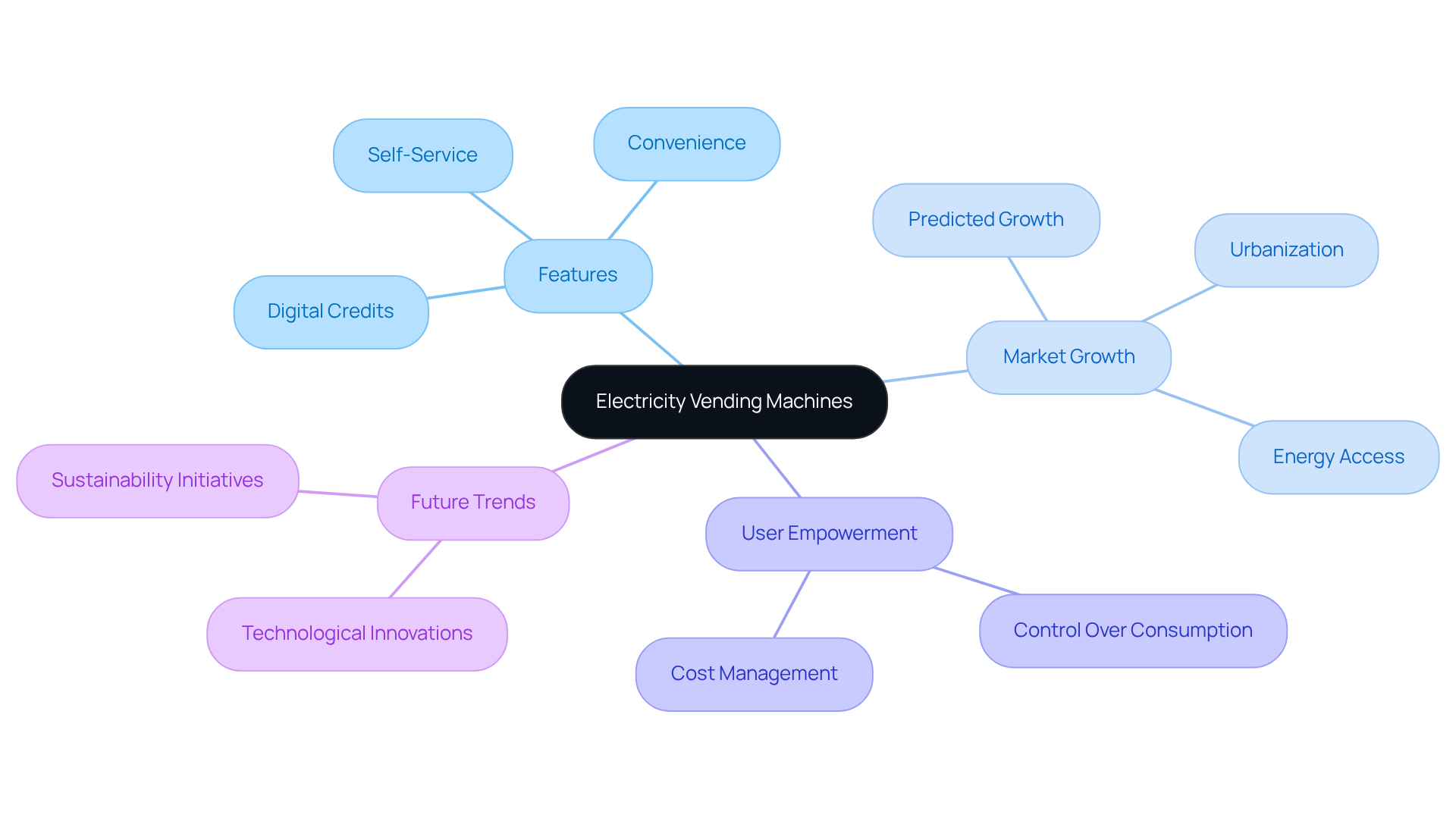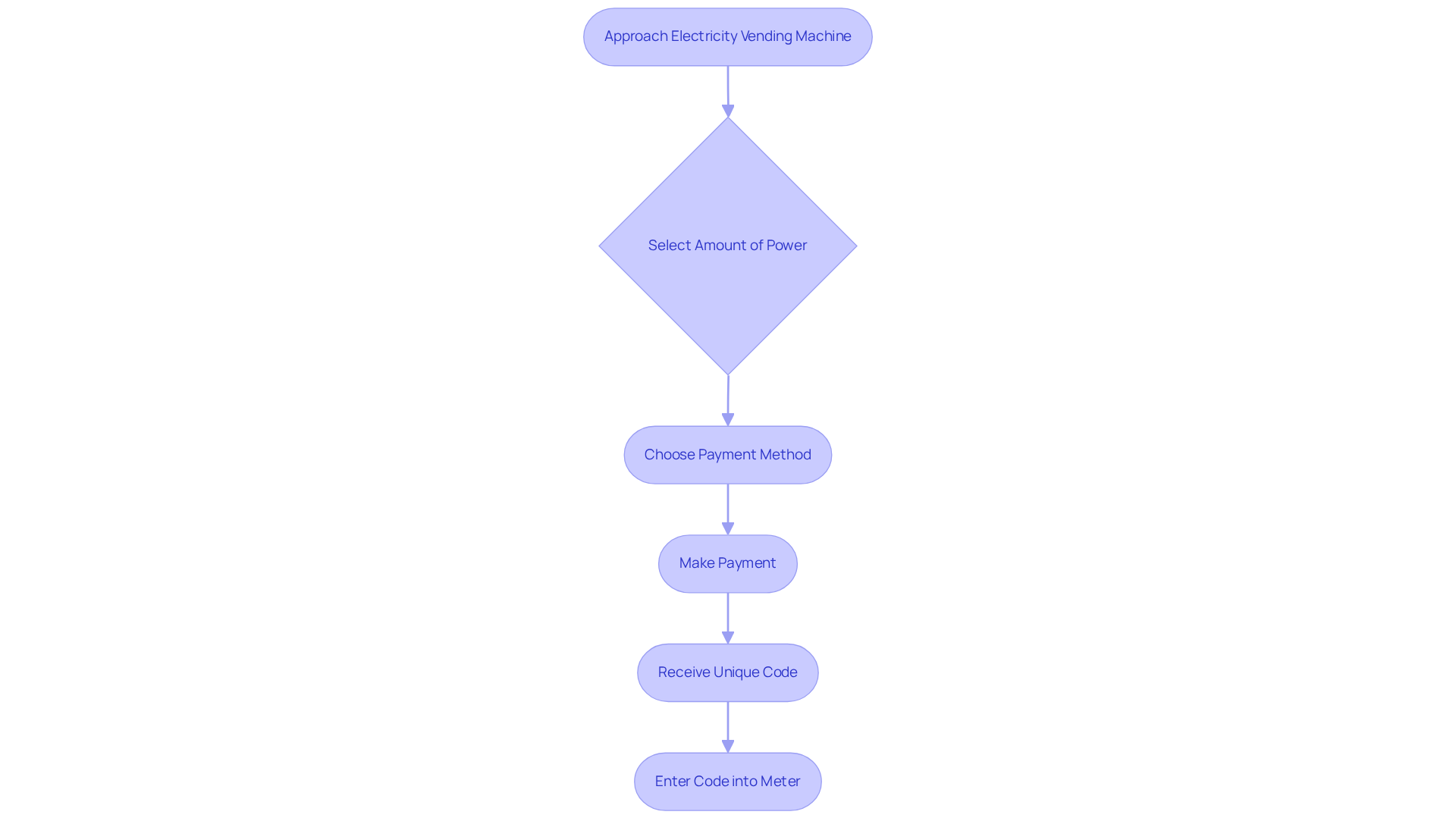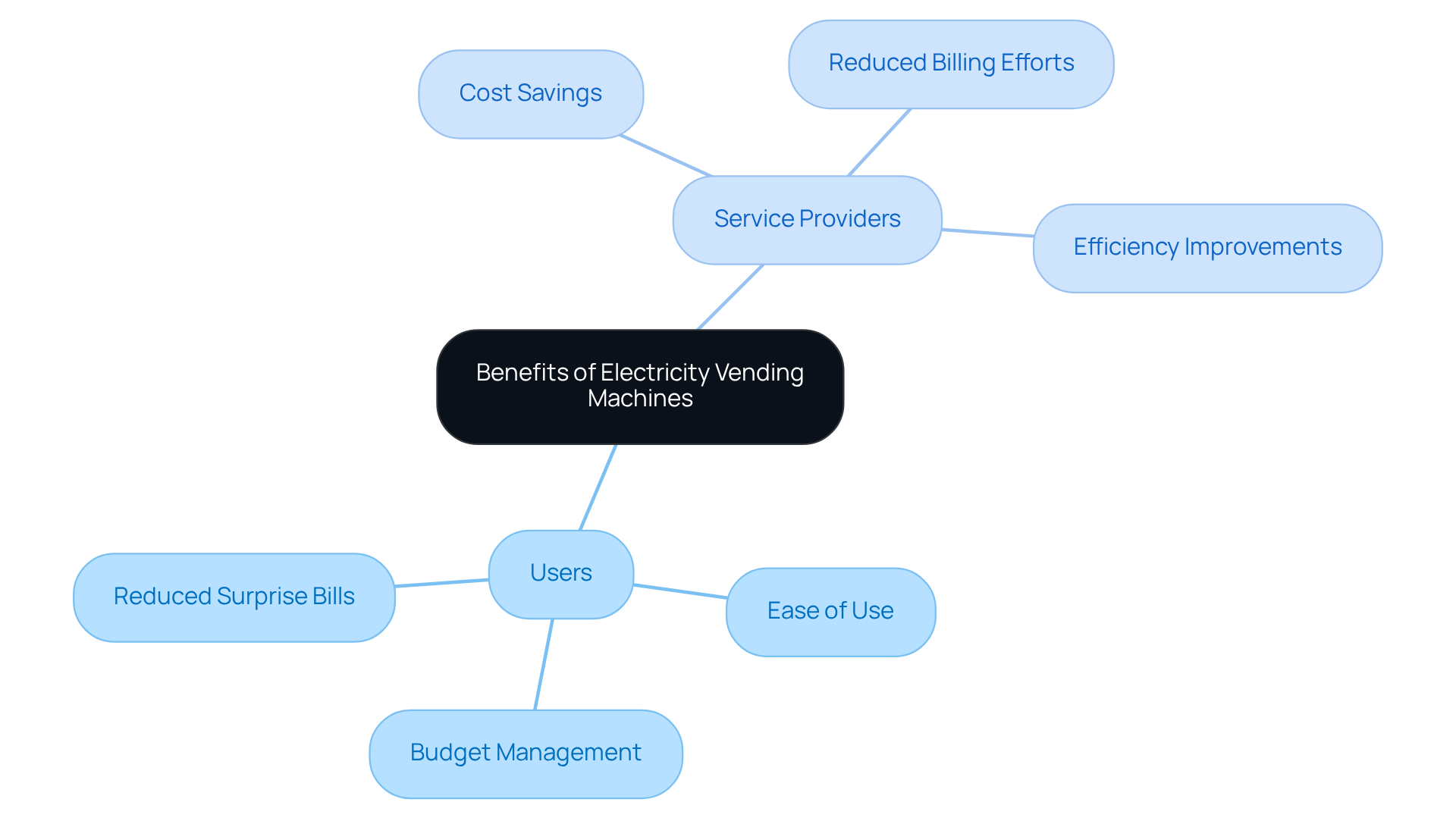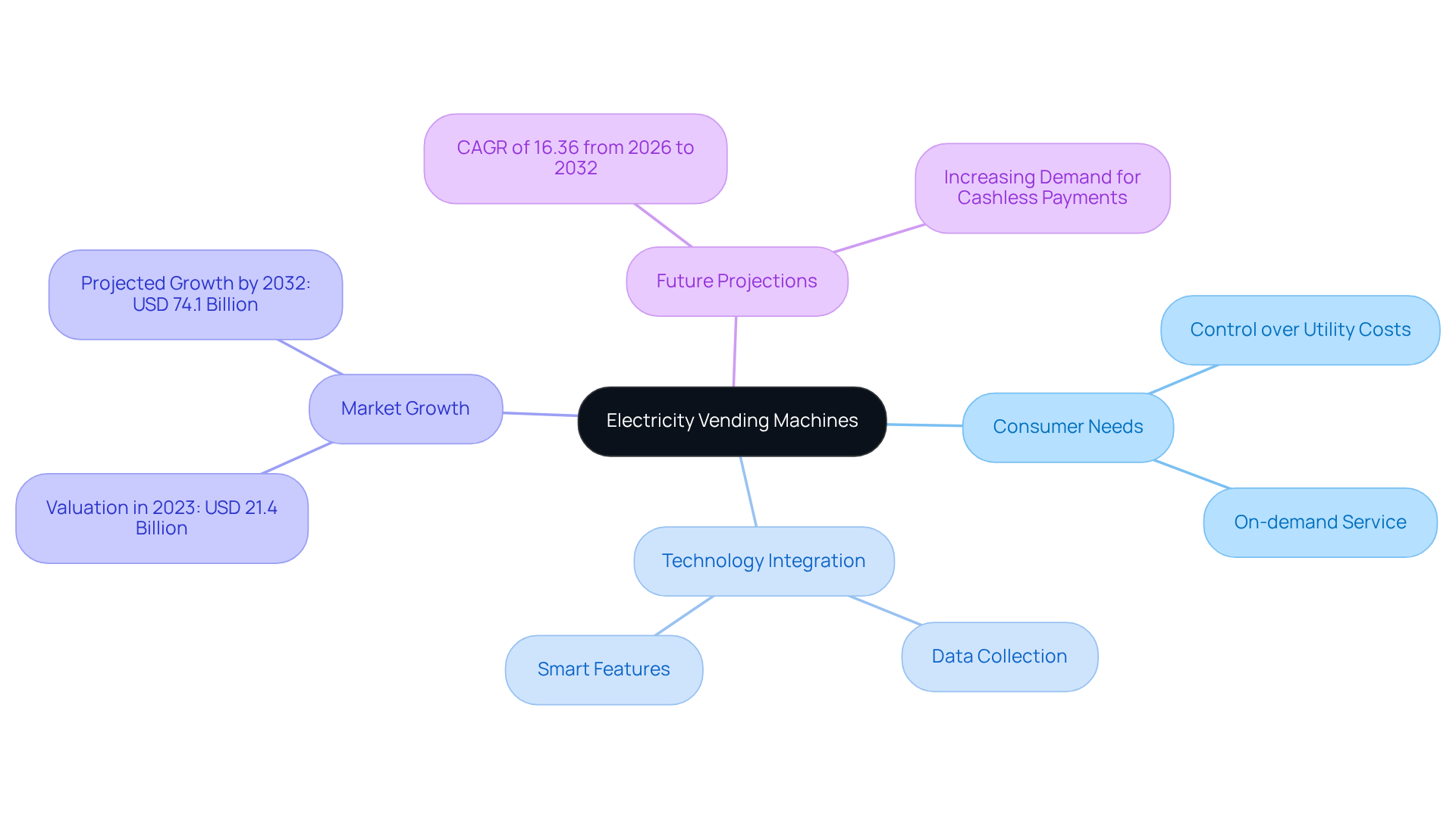Overview
Have you ever found yourself in a pinch, needing to top up your electricity but not wanting to deal with the hassle of traditional billing? That’s where electricity vending machines come in! These automated kiosks let you buy power credits or tokens for prepaid electricity services. It’s a super convenient, self-service way to access energy when you need it.
What’s really exciting is their growing popularity, especially in underserved areas. They make transactions simpler, help cut costs for service providers, and give you more control over your energy usage. It’s like having the power in your hands — literally!
So, if you’re looking for a hassle-free way to manage your electricity, consider checking out these vending machines. They’re a game changer for anyone wanting to take charge of their energy consumption.
Introduction
Imagine if getting electricity was as easy as grabbing a snack from a vending machine. Sounds pretty convenient, right? Well, electricity vending machines are changing the game for how we access power services. They offer a prepaid option that cuts out the usual billing headaches.
As our cities grow and the need for flexible energy solutions increases, these automated kiosks are becoming must-haves for both consumers and service providers. But how do these machines actually work? And what problems do they solve in the energy world?
Let’s break it down. By looking at how electricity vending machines operate and the benefits they bring, we can see a significant shift in how we think about energy access and modern commerce. It’s an exciting time to explore this new frontier!
Defining Electricity Vending Machines
Imagine needing to buy power credits or tokens for your prepaid power services. Automated kiosks are here to help! They work just like your typical vending machines, but are designed specifically as electricity vending machines to provide power in the form of digital credits. You can use these credits to top up your prepaid power meters. This is a game-changer, especially in places where power access is limited or where folks prefer the flexibility of prepaid options. By offering a self-service way to get power, the electricity vending machine makes it easier and more convenient for everyone.
Now, let’s talk about the future. The market for power dispensing devices is set to grow significantly, with predictions showing a rise in installations and usage by 2025. The global automated retail market is expected to hit $37.2 billion by 2032, growing at a steady rate of 7.5% each year from 2023 to 2032. Why is this happening? Well, urbanization is on the rise, and there’s a growing demand for , especially in underserved areas. Take Fuji Electric’s energy-efficient devices, for example. They’re proving how these units can bridge the gap in energy access, providing reliable power to communities that struggle with traditional utility services.
Industry experts are buzzing about the potential of power dispensing technology. One specialist put it perfectly: "The incorporation of automated dispensers into the energy industry not only streamlines the buying process but also empowers users by giving them control over their energy consumption and costs." This really captures the trend towards innovative energy solutions that are all about making life easier for users.
In a nutshell, power dispensing units are changing the way we interact with energy services. They simplify the process, allowing you to manage your power needs more easily while supporting the ongoing growth of the energy market. So, if you’re looking for a more convenient way to handle your energy, these kiosks might just be the solution you need!

How Electricity Vending Machines Operate
You know those [electricity vending machines](https://researchgate.net/publication/318762497_Economic_analysis_of_the_energy_consumption_of_a_vending_machine_in_a_Mexican_university_building)? They work through a mix of hardware and software systems. When you walk up to one, you can pick how much power you want to buy. Most of these devices accept different payment methods—cash, credit cards, or even mobile payments. Once you make your payment, the unit gives you a unique code or token that represents the energy credits you've just bought. You can enter this code into a to access your purchased electricity. Plus, they often come with real-time monitoring systems to keep track of inventory and usage, so they’re always stocked and ready to go.
Here’s the thing: industry experts say the average transaction time for these devices is super quick, letting you wrap up your purchase in just a few seconds. This speed is a game-changer in busy areas where quick service is a must. For instance, a standard dispenser for chilled drinks uses about 10-11 kWh each day, costing between €3 and €6 daily, which adds up to over €2000 a year.
A case study on electricity vending machines really highlighted how they optimize payment methods and boost customer satisfaction. By using advanced payment systems, the electricity vending machine has transformed how we engage with electricity services, making transactions smooth and easy to use. As Tajammul Pangarkar pointed out, 'The global automated retail market has shown steady growth over the past ten years,' which hints at a strong trend towards embracing this kind of technology.

Benefits of Electricity Vending Machines
Electricity vending machines are transformative for both users and service providers. They make getting power super easy by allowing folks to buy electricity through an electricity vending machine on a prepaid basis, skipping the usual hassles of traditional utility billing. This not only simplifies transactions but also helps you , cutting down on those surprise bills.
For service providers, these kiosks mean big savings. They trim down costs related to billing and collections since the prepaid system reduces the need for chasing after payments. Plus, the automated dispensers make everything run smoothly, which customers really appreciate—who doesn’t love a straightforward buying process?
Take Vending Village, for example. They’ve really revamped automated retail. Customers are thrilled with how easy it is to interact with suppliers. One happy client shared, "I bought a location, but it wasn't a fit. I got a full refund - no questions asked. Just as advertised!" This level of commitment to customer satisfaction is echoed by industry experts who see Vending Village as a real game changer, making it easier for new operators to jump in and creating a supportive atmosphere for everyone involved.
So, when you look at electricity vending machines, they’re not just a trend; they’re transforming the energy sector. They’re creating a more efficient and user-friendly environment for both consumers and service providers alike. If you’re considering getting involved, now’s the time to dive in!

The Role of Electricity Vending Machines in Modern Commerce
Power dispensing units are quickly becoming essential in today’s trade, especially in urban areas and developing regions where traditional power access can be a challenge. These devices mark a shift towards more flexible, consumer-friendly business models that cater to the growing demand for on-demand services. As you might have noticed, consumers are looking for more control over their utility costs, and power kiosks provide a practical solution to meet those needs.
By incorporating smart technology, these devices allow for better data collection and analysis. This means service providers can fine-tune their offerings and improve customer interactions. It’s part of a larger trend towards automation and self-service options across various industries, from retail to utilities.
Think about it: in places where electricity supply is spotty, an electricity vending machine can serve as a reliable power source, letting users purchase electricity as they need it. This model not only empowers consumers but also helps utility companies . Business leaders see the potential here. Richard Johnson from Acumen Research and Consulting pointed out that "the smart dispensing system market, valued at USD 21.4 Billion in 2023, is projected to exceed USD 74.1 Billion by 2032." With city populations on the rise, the need for accessible and convenient options like power distribution units is only expected to grow.
Moreover, the market for intelligent automated kiosks is forecasted to reach USD 30.63 billion by 2032, expanding at a CAGR of 16.36% during the period from 2026 to 2032. This growth underscores the increasing importance of electricity vending machines for managing utility costs and catering to consumer preferences for cashless payment systems.

Conclusion
Electricity vending machines are changing the game when it comes to how we access and manage our energy needs. Think about it: with these self-service machines, you can buy power credits on your own terms. This is especially handy in places where traditional utility services might not cut it. It’s all about making energy solutions more convenient and prepaid, putting you in the driver’s seat when it comes to your electricity consumption.
Throughout this discussion, we've seen some key benefits of these vending machines. They come with user-friendly interfaces and a variety of payment options, which can really enhance customer satisfaction. Plus, they help providers cut down on operational costs. It’s a win-win situation that’s reshaping the energy service landscape. And let’s not forget, the market for automated retail solutions is on the rise, highlighting just how important these devices are for meeting the needs of both consumers and businesses.
As more people move to urban areas and the demand for easy energy solutions grows, electricity vending machines are set to become essential in modern commerce. They offer a practical option for those of us looking for flexibility and budget control. For service providers, this technology is a chance to streamline operations and serve customers better. So, embracing this innovation isn’t just smart; it’s necessary for a more efficient, user-friendly energy market.
So, what’s the takeaway? If you haven’t considered integrating electricity vending machines into your business model yet, now’s the time to think about it. It could be the step that not only benefits your operations but also enhances the experience for your customers.
Frequently Asked Questions
What are electricity vending machines?
Electricity vending machines are automated kiosks that allow users to buy power credits or tokens for prepaid power services, functioning similarly to traditional vending machines but specifically designed to provide digital credits for topping up prepaid power meters.
How do electricity vending machines benefit users?
They offer a self-service, convenient way to acquire power credits, making it easier for individuals, especially in areas with limited power access or those preferring prepaid options, to manage their energy needs.
What is the projected growth of the electricity vending machine market?
The market for power dispensing devices is expected to grow significantly, with predictions of increased installations and usage by 2025, contributing to the global automated retail market, which is anticipated to reach $37.2 billion by 2032.
What factors are driving the demand for electricity vending machines?
The rise in urbanization and the growing demand for convenient energy solutions, particularly in underserved areas, are key factors driving the demand for electricity vending machines.
How do power dispensing units impact energy access?
Power dispensing units, like those from Fuji Electric, help bridge the gap in energy access by providing reliable power to communities that struggle with traditional utility services.
What do industry experts say about the potential of power dispensing technology?
Industry experts highlight that the incorporation of automated dispensers into the energy industry streamlines the buying process and empowers users by giving them control over their energy consumption and costs.
How are electricity vending machines changing the energy service landscape?
They simplify the process of managing energy needs, making it easier for users to handle their power requirements while supporting the ongoing growth of the energy market.
List of Sources
- Defining Electricity Vending Machines
- Vending Machine Market (https://market.us/report/vending-machine-market)
- Vending Machine Market Size And Size ,Trends ,Statistics 2032 (https://alliedmarketresearch.com/vending-machine-market-A09486)
- Intelligent Vending Machine Market Size | Analysis Report [2032] (https://fortunebusinessinsights.com/intelligent-vending-machine-market-107360)
- Vending Machines Market Size, Share & Growth Report, 2033 (https://marketdataforecast.com/market-reports/vending-machines-market)
- Vending Machine Statistics and Facts (2025) (https://news.market.us/vending-machine-statistics)
- How Electricity Vending Machines Operate
- Vending Machine Statistics in 2023 - Vending Locator (https://vendinglocator.com/blog/vending-machine-statistics)
- How Much Electricity Does a Vending Machine Use a Month? (https://vending-machines.ie/vending-machine-electricity-usage)
- Economic analysis of the energy consumption of a vending machine in a Mexican university building | Request PDF (https://researchgate.net/publication/318762497_Economic_analysis_of_the_energy_consumption_of_a_vending_machine_in_a_Mexican_university_building)
- Vending Machine Statistics and Facts (2025) (https://news.market.us/vending-machine-statistics)
- Benefits of Electricity Vending Machines
- The Pros And Cons Of Prepay Electricity (https://honestgorilla.com/the-pros-and-cons-of-prepay-electricity)
- Prepaid Electricity Meters to Decrease Electricity Use and Recover Utility Revenue in South Africa | The Abdul Latif Jameel Poverty Action Lab (https://povertyactionlab.org/evaluation/prepaid-electricity-meters-decrease-electricity-use-and-recover-utility-revenue-south)
- Benefits of Prepaid Electricity: Why It's Worth Considering? (https://nowpowertexas.com/benefits-of-prepaid-electricity-why-its-worth-considering)
- United States Prepaid Electricity Meter Market: Key Highlights (https://linkedin.com/pulse/united-states-prepaid-electricity-meter-market-le0xf)
- Prepaid Electricity Metering Market: Global Industry Analysis and Forecast (2024-2030) (https://maximizemarketresearch.com/market-report/prepaid-electricity-metering-market/190646)
- The Role of Electricity Vending Machines in Modern Commerce
- Smart Vending Machines Market Size, Share, Trends & Forecast (https://verifiedmarketresearch.com/product/smart-vending-machines-market)
- Vending Machine Market Size to Cross USD 45.06 Billion By 2034 (https://precedenceresearch.com/vending-machine-market)
- Intelligent Vending Machine Market Size to Reach USD 74.1 Billion by 2032 (https://acumenresearchandconsulting.com/press-releases/intelligent-vending-machine-market)
- Vending Machine Statistics in 2023 - Vending Locator (https://vendinglocator.com/blog/vending-machine-statistics)
- Vending Machine Statistics and Facts (2025) (https://news.market.us/vending-machine-statistics)




